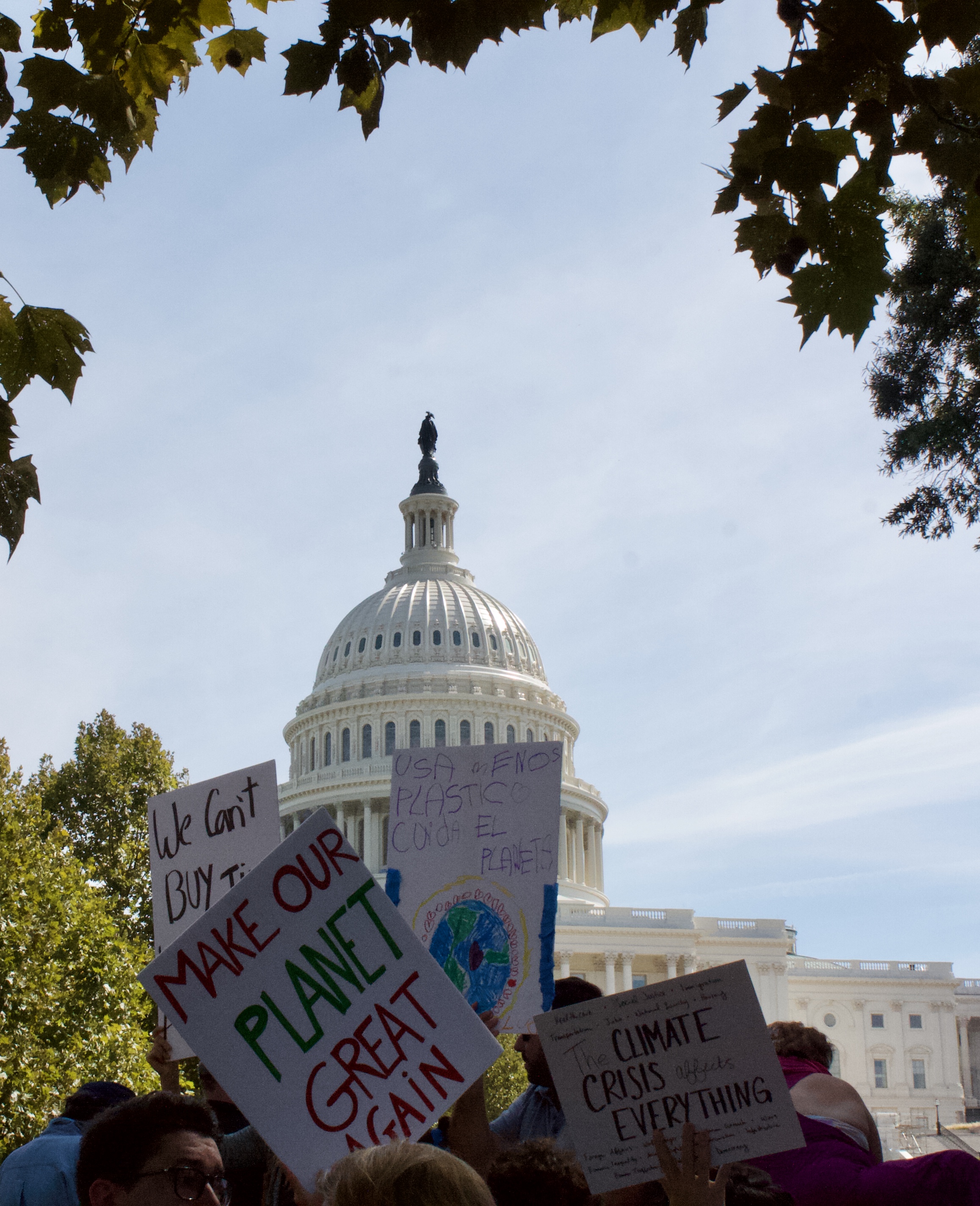AAC is Excited about the Reconciliation+Infrastructure Package: Here is Why
Over the past several months, Congress has been making big moves in order to address the climate crisis through both the infrastructure package and the budget reconciliation process. This is a once-in-a-generation opportunity for our Representatives to allocate serious funding to address the climate crisis and protect public lands.
There is room within these processes to invest in public lands, take bold action on climate, reform outdated oil and gas leasing processes, and create new pathways for Americans to be employed on public lands. In order to ensure we hold our Lawmakers accountable, we must demand that our elected officials go big on climate.
Why must we use the budget reconciliation process to go big on climate?
The Senate can pass reconciliation bills with a simple majority vote rather than a filibuster-proof vote. This means that the bill could pass on the grounds of a one-vote majority rather than needing a 3/5ths majority vote which equates to a 60 vote minimum. Given the current 50-50 Democrat-Republican split in the Senate, the budget reconciliation process could allow for an easier path to a whole-of-government approach to taking bold action on climate.
Where are we in the process?
Legislative priorities of the committees who are engaged in the reconciliation process were due to the Senate on September 15. Once all of the individual pieces of legislation are consolidated, the Senate will then vote on the entire package, as will the House. If at that point the House and Senate adopt different reconciliation bills, they must then come together in a conference committee (a committee composed of select senators and house members) to work out the differences between the two.
Once the budget reconciliation bill is passed by both chambers, the House will then need to vote on the infrastructure package. If the House decides to make changes to the bill, which is likely to happen, the two chambers will once again need to reconcile the differences in committee. Due to these factors, it is hard to predict when the process will reach completion. This is why it is more important than ever to share your thoughts on this process with your Lawmakers.
Amendments AAC is Advocating For:
There are many different things that you as a constituent can advocate to your Representatives for in this process. We have outlined several of the amendments we are most excited about below. At the end of this blog, there is an action alert you can utilize to write your Lawmakers. While sending an email to encourage bold action on climate is great, it is even more powerful to include the things you care about most in the text. Please copy + paste various bullet points that stand out to you as important in the points below.
Support the Civilian Climate Corps (CCC):
The CCC would be an investment in both people and public lands and is a critical piece of the climate change mitigation puzzle. We must prioritize climate action on public lands as we rebuild our economy. Congress should use budget reconciliation to fund the CCC to work to restore critical ecosystems, address deferred maintenance needs, and advance energy retrofitting on public lands. The CCC has the opportunity to support rural and frontline communities through improving public lands access, mitigating climate risks, and creating new jobs.
In order for the CCC to reach its full potential, there must be a federal public lands funding component. Congress needs to provide funding to the land management agencies that are explicitly dedicated to the implementation of the CCC projects. If there is no dedicated funding for individual projects, there may not be the budget required to see public lands projects to fruition. We are urging Congress and the House Natural Resources Committee to add a specific budgetary line item to fund these projects in order for the CCC to have its biggest impact.
Lastly, Congress must ensure that the budget for the CCC accounts for a living wage for Corps members.
Protections for Critical and Sacred Landscapes: Oak Flat + Arctic National Wildlife Refuge!
Please support the investment in shielding Oak Flat, a sacred site of the Apache people in Arizona from the Resolution Copper mine.
Please support the repeal of the Arctic National Wildlife Refuge oil and gas program as well as the cancellation of all leases that were sold as a result of the previous administration’s lease sale.
Investment in Public Land Climate Resiliency
Please support the funds being allocated to the individual public lands agencies in order to support the protection, restoration, and resiliency of public lands and resources. Investing in these protections is critical for the economic viability of gateway communities outside of public lands, thousands of jobs, and the support of outfitters + guides who operate their businesses on public lands.
Support Mineral Leasing Act Reform
It is reassuring to see thoughtful amendments to the Mineral Leasing Act included in reconciliation. There must be a fair price, and economic return, established for leasing minerals on public lands, and the price has historically been too low. Please support the proposed increased cost of acreage and the requirement that once every 4 years the dollar amounts pertaining to mineral leasing on public lands are assessed for inflation and market needs. Additionally, the effort to shorten the mineral leasing terms is a good step in the right direction, please support these amendments.
Protect NEPA!
Please support the funds being allocated to increasing the efficiency and effectiveness of the National Environmental Policy Act. In order for NEPA to be most effective and ensure that projects are subject to thorough environmental review, there is a need to add capacity via additional funding and personnel.
Bonding Reform and Orphaned Wells Clean up: Create New Jobs!
We are glad to see $4.7 billion for orphan wells clean up in the Bipartisan Infrastructure Framework. This funding represents a great start toward addressing a massive, country-wide clean-up need.
We must also address the system that creates these wells in the first place, so we are not faced with the same situation down the road, continuing to leave taxpayers with the cleanup responsibility for the industry’s mess.
It is crucial to pass the landmark updates to the federal oil and gas bonding requirements, to help better cover the cost of clean-up. This will save the federal government and taxpayers money, and act to prevent future orphaned wells while protecting communities, creating jobs, and combating climate change.
The BLM does have the authority to raise federal bond amounts, but the agency has failed to do so. Congress must act to ensure that bond updates are in statute, and not dependent on an agency that has failed to address this issue for decades.
A 2019 GAO report found that current federal bonding requirements for oil and gas operators are inadequate and outdated. These must be updated. Bond amounts have not been updated since the 1950s and 1960s, and have never been adjusted for inflation, nor advances in technology that increase reclamation costs.
We support the inclusion of an adjusted carbon pricing system within budget reconciliation. Starting with a low price (~$20/ton) and increasing after five years will incentivize clean energy production and consumption. As well as a border adjustment tax that will put the United States at a global advantage as we see a shift towards carbon taxation and climate action overseas.
The use of carbon tax funds to pay for other climate policies. This will offset the total cost of climate action.
Full investment in an updated electric grid to decrease carbon in power production and increase disaster resilience.
Invest in financially and physically accessible electric vehicles and charging stations through tax rebates and infrastructure investments.

















